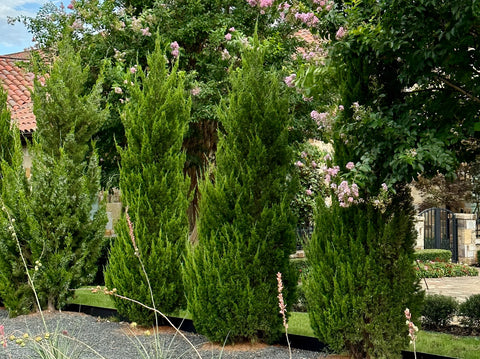The Green Mountain Boxwood is a hardy, upright evergreen shrub known for its pyramidal shape and year-round green foliage. Perfect for formal gardens, hedges, or topiaries, this versatile shrub offers elegance and structure to landscapes. In this guide, we’ll cover how to plant and care for Green Mountain Boxwood to keep it looking lush and healthy.
What is a Green Mountain Boxwood?
The Green Mountain Boxwood (Buxus x ‘Green Mountain’) is a dense, slow-growing evergreen shrub that reaches heights of 3-5 feet and a spread of 2-3 feet. It has a natural pyramidal shape, making it ideal for formal hedging, borders, or as a topiary. Known for retaining its vibrant green color throughout winter, Green Mountain Boxwood is particularly well-suited for colder climates.
Why Choose Green Mountain Boxwood?
• Year-Round Greenery: Retains its vibrant green color through all seasons, even in winter.
• Cold Hardy: One of the most cold-tolerant boxwoods, thriving in cooler climates.
• Low Maintenance: Requires minimal care and pruning to maintain its neat shape.
How to Care for Green Mountain Boxwood
The Green Mountain Boxwood is relatively easy to care for, but following a few key practices will ensure it remains healthy and vibrant.
1. Sunlight Requirements
Green Mountain Boxwood thrives in partial to full sun. It performs best when exposed to 4-6 hours of sunlight daily but can tolerate partial shade, especially in hotter climates.
2. Watering Needs
Water deeply and regularly during the first growing season to help establish a strong root system. Once established, Green Mountain Boxwood is moderately drought-tolerant but performs best with consistent moisture, particularly during dry periods.
3. Ideal Soil and Climate
This boxwood prefers well-draining soil with a slightly acidic to neutral pH. It is hardy in USDA zones 4-9, making it suitable for various climates, including colder regions. Mulching around the base helps retain moisture and protect the roots from extreme temperatures.
4. Fertilizing
Fertilize in early spring with a balanced, slow-release fertilizer to promote healthy growth. Be careful not to over-fertilize, as too much can lead to excess growth that detracts from its natural shape.
Common Issues and Solutions
• Leaf Browning: Often caused by winter burn or drought stress. Mulching around the base and watering during dry periods can prevent this issue.
• Pests: Green Mountain Boxwood is susceptible to boxwood leafminers and spider mites. Treat infestations with insecticidal soap or neem oil as necessary.
Pruning and Maintenance
Prune Green Mountain Boxwood in late winter or early spring to maintain its shape and remove any dead or damaged branches. This shrub naturally holds a pyramidal shape but responds well to light pruning to create formal hedges, topiaries, or other designs.
Uses in Landscaping
The Green Mountain Boxwood is versatile and can be used in a variety of ways in the landscape:
• Hedges and Borders: Its natural shape makes it perfect for low hedges or garden borders.
• Foundation Planting: Ideal for framing entryways or creating a neat look around the foundation of homes.
• Topiary: This shrub’s dense foliage makes it an excellent candidate for shaping into topiaries or formal garden designs.
Final Thoughts on Green Mountain Boxwood
The Green Mountain Boxwood is a reliable, low-maintenance shrub that adds elegance and structure to any garden. Its year-round greenery, cold tolerance, and natural form make it a favorite for formal landscaping projects, whether used in hedging, foundation plantings, or topiaries. With the right care, this hardy boxwood will provide beauty and structure for many years.


